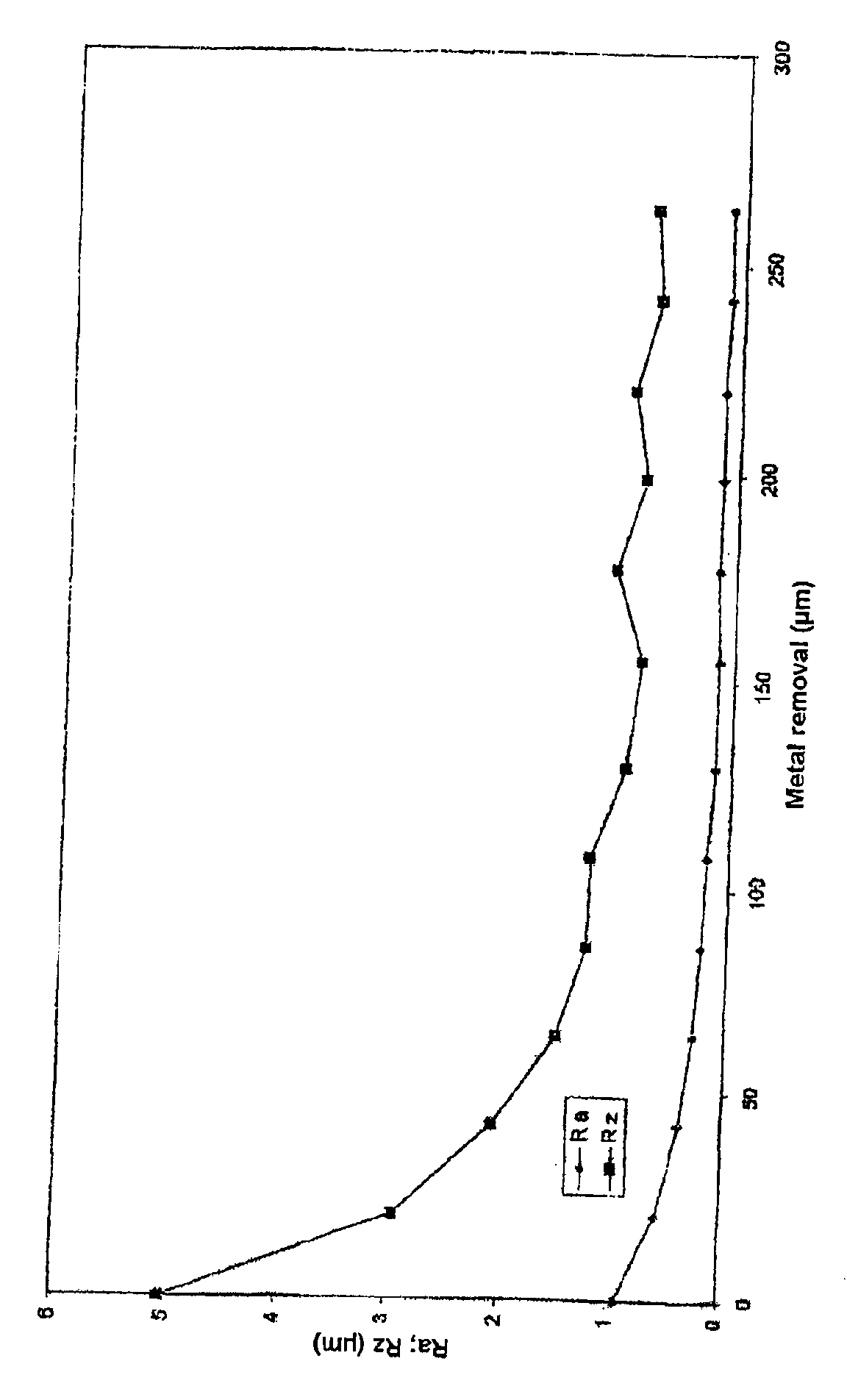Electropolishing process for niobium and tantalum
a technology of niobium and tantalum, which is applied in the direction of electrolytic processes, electrical equipment, electrical machining apparatus, etc., can solve the problems of high cost, toxic and corrosive, and inability to meet the requirements of electropolishing processes known to date, and achieves high safety and environmental protection. the effect of reducing the risk of contamination
- Summary
- Abstract
- Description
- Claims
- Application Information
AI Technical Summary
Problems solved by technology
Method used
Image
Examples
example 1
[0019] Prior to electropolishing, a sheet of pure niobium was submitted to alkaline degreasing, rinsed in water and dried. The following electropolishing variables were used:
[0020] Material: pure niobium (sheet with thickness of 1.2 mm)
[0021] Electrolyte: methanesulfonic acid+30 g / l ammonium hydrogen difluoride
[0022] Bath temperature: 30° C.
[0023] Current density: 10 A / dm2
[0024] Polishing time: 12 minutes
[0025] After electropolishing, the sheet was rinsed in demineralized water and dried in air.
[0026] Result: high-gloss surface; the roughness values Ra and Rz are more than 60% lower, relative to the initial condition of the material (cf. FIG. 1).
example 2
[0027] A tantalum sheet was submitted to alkaline degreasing, rinsed in water and dried prior to electropolishing. The following electropolishing variables were used:
[0028] Material: tantalum (sheet with thickness of 0.5 mm)
[0029] Electrolyte: methanesulfonic acid+60 g / l ammonium hydrogen difluoride
[0030] Bath temperature: 30° C.
[0031] Current density: 13 A / dm2
[0032] Polishing time: 10 minutes
[0033] After electropolishing, the sheet was rinsed in demineralized water and dried in air.
[0034] Result: high-gloss surface
PUM
| Property | Measurement | Unit |
|---|---|---|
| concentration | aaaaa | aaaaa |
| concentration | aaaaa | aaaaa |
| concentration | aaaaa | aaaaa |
Abstract
Description
Claims
Application Information
 Login to View More
Login to View More - R&D
- Intellectual Property
- Life Sciences
- Materials
- Tech Scout
- Unparalleled Data Quality
- Higher Quality Content
- 60% Fewer Hallucinations
Browse by: Latest US Patents, China's latest patents, Technical Efficacy Thesaurus, Application Domain, Technology Topic, Popular Technical Reports.
© 2025 PatSnap. All rights reserved.Legal|Privacy policy|Modern Slavery Act Transparency Statement|Sitemap|About US| Contact US: help@patsnap.com

